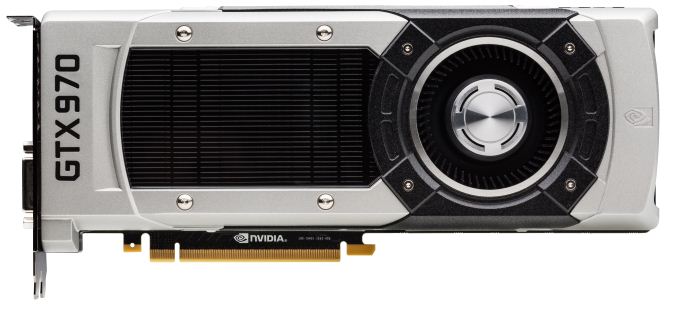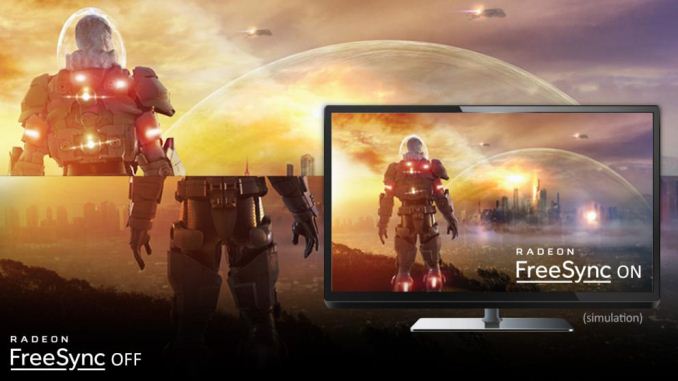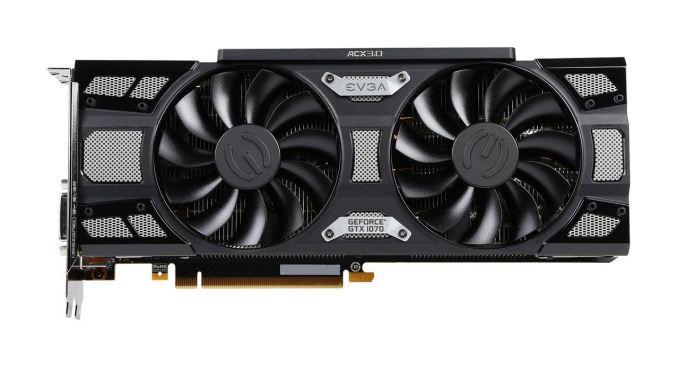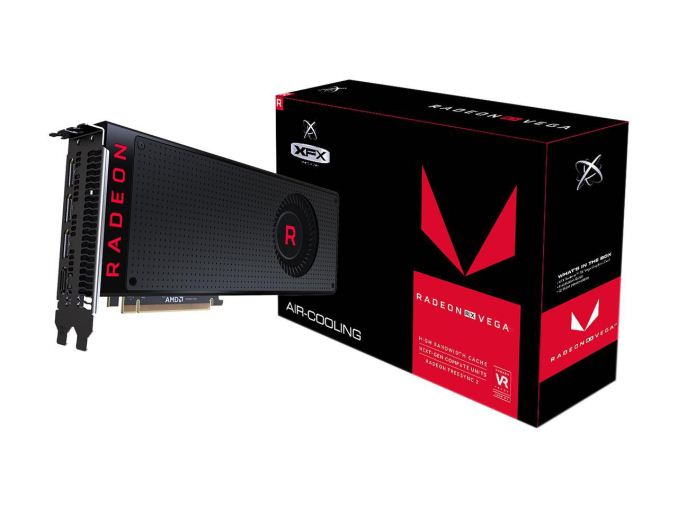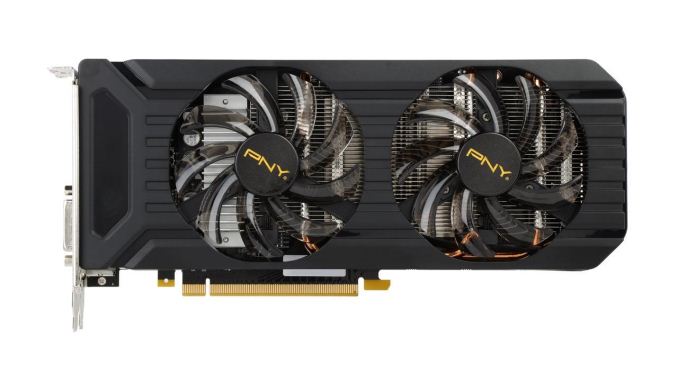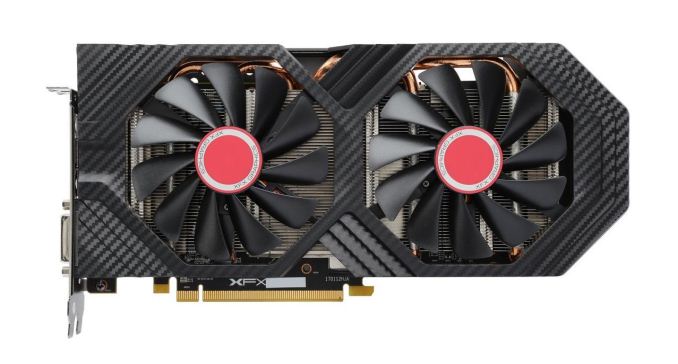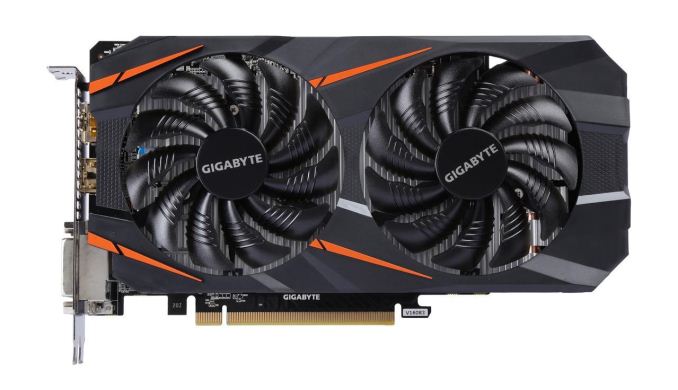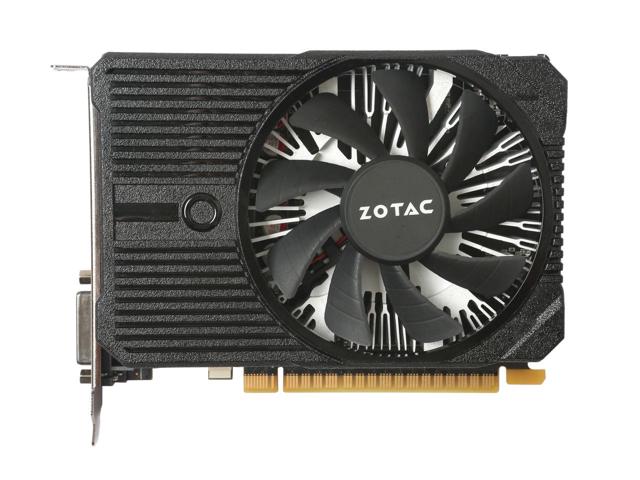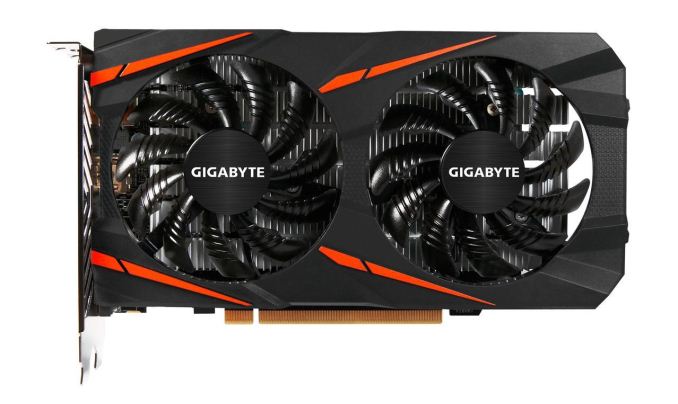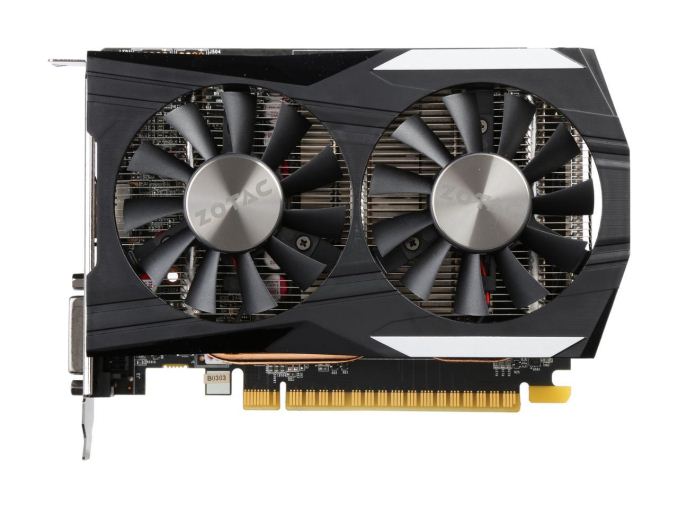- Get link
- X
- Other Apps
- Get link
- X
- Other Apps

Best Video Cards for Gaming: Holiday 2017
PT KONTAK PERKASA - For gaming PCs that push the pretty pixels on the screens, the video card is the most important component. And given the sheer amount of custom options, choosing the right graphics card for your budget can be very difficult. In our Video Cards for Gaming guides, we give you our recommendations in terms of GPU models and current prices representative of an affordable non-blower custom card. Our guide targets common gaming resolutions at system-build price points similar to our CPU guides.| AnandTech Gaming Video Cards Recommendations: 2017 (Prices are Nov-17) |
||||||
| Category | Recommended | Runner Up | ||||
| The $300 Video Card Sweet Spot |
Nothing | |||||
| The $2000 4K PC | GeForce GTX 1080 Ti | $730 | - | |||
| The $1600 1440p PC | GeForce GTX 1080 | $520 | Radeon RX Vega 64 | $570 | ||
| The $1300 1440p PC | GeForce GTX 1070 | $430 | Radeon RX Vega 56 | $470 | ||
| The $1000 1080p+ PC | GeForce GTX 1060 6GB (1280 cores) | $270 | Radeon RX 580 8GB | $290 | ||
| The $800 1080p PC | Radeon RX 580 4GB | $250 | GeForce GTX 1060 3GB (1152 cores) | $215 | ||
| Radeon RX 570 4GB | $240 | |||||
| The $500 "1080p" PC | GeForce GTX 1050 | $120 | GeForce GTX 1050 Ti | $160 | ||
| Radeon RX 560 | $130 | |||||
| Ones to Watch | AMD Vega 11 Custom RX Vega 64 and 56 cards |
|||||
Before we dive into our recommendations, we have to talk about the elephant in the graphical room: high prices of mid-range cards. In what is now well-documented, cryptocurrency mining demand for graphics cards caused prices to skyrocket earlier this year. Primarily driven by Ethereum mining, demand first affected RX 480s in late 2016, before spreading to the rest of AMD and NVIDIA’s mid-range offerings earlier this summer. Those inflated prices have not quite recovered even today.
In the past generation, the upper performance/price sweet spot around $300 was occupied by the stalwart Radeon R9 390 and popular GeForce GTX 970. But from the beginning, this generation has not quite seen an equivalent. When NVIDIA began the FinFET GPU generation last year, they launched their cards not only at price points higher than the GeForce 900 series, but also with Founders Edition premiums, where in the first post-launch months only Founders Editions were in stock. On AMD’s side, their Polaris based RX 400 and RX 500 series cards were firmly targeted at the sub-$250 mainstream market, while their high-end $400+ RX Vega cards were only launched a few months ago.
Why does the $300 “Sweet Spot” matter? For gamers looking to min-max their PC builds, the bulk of the budget goes into the highest performing graphics card priced right before diminishing returns. In recent years, this price range is in the $250 to $350 area. But in the lead-up to the 2017 holiday season, no card naturally falls in this range with performance to match.
Today, the $300 Sweet Spot also matters because of the current VR headset and variable refresh monitor market. High-end VR headsets continue to drop in price, while FreeSync and G-Sync monitors have become much more widespread. The variable refresh technologies themselves are capable of providing smoother gaming experiences, in particular enabling mid-range cards to punch above their traditional weight. The kicker is that only AMD cards support FreeSync and only NVIDIA cards support G-Sync.
So if you want a variable refresh monitor, your choice of video card locks your options. NVIDIA charges a premium for G-Sync, which is reflected in higher monitor prices. But because AMD does not have a strict certification program outside of FreeSync 2, there are some questionable FreeSync monitors, and annoyingly, some without support for Low Framerate Compensation (LFC). If you are looking to purchase a FreeSync monitor, LFC is almost mandatory as it maintains the variable refresh experience when the refresh rate dips below the monitor’s minimum, which for many monitors is still 40Hz+.
Returning to you, the consumer, this means that min-maxing for a VR build or new monitor has become that much harder. Particularly if your game tastes veer towards either DX11 or DX12/Vulkan games; as a rough rule of thumb, GeForce cards tend to perform better on DX11 games while Radeon cards tend to perform better (or at least punch above their weight) on DX12/Vulkan. We will keep these complications in mind when we list our recommendations.

With the GeForce GTX 1080 Ti, we have finally seen arguably the first single GPU solution for no-compromises 4K gaming. This comes at a time where both AMD and NVIDIA are stepping back from CrossFire and SLI respectively, leaving single GPU solutions as the all-around preferred option. While SFF GTX 1080 Ti cards exist, they may not fit a given mini-ITX case.
In terms of performance, the reference GTX 1080 Ti is able to push around 40 to 50fps at 4K on maximum settings for the most demanding games, with custom cards offering even higher performance. At 1440p, this often translates to high fps suitable for high refresh rate monitors (96Hz and above), and so a good match for high-end G-Sync monitors. In the case that 4K or multi-monitor gaming starts to push past 8GB VRAM somehow, the GTX 1080 Ti's 11GB GDDR5X frame-buffer has you covered.
This high performance is also coupled with relatively reasonable power consumption, though the card's price here is pushing well past $700. Compared to the pricier reference-only Titan Xp and Titan X (Pascal), prosumer cards that don't come with professional driver support anyway, the GTX 1080 Ti is close enough or superior in gaming performance to be the better purchase.
AMD essentially has no current GTX 1080 Ti tier competitor, with their highest performing card being their Radeon RX Vega 64 Liquid Cooled card. Price-wise, the RX Vega 64 Liquid has an official SEP of $699 as part of AMD’s Radeon Pack bundles. But outside of CrossFire setups, that may be the option for gamers who already own a top-of-the-line FreeSync monitor.
Beyond this point, you will have to opt for 2-way GTX 1080 Ti or Titan Xp SLI, as NVIDIA no longer officially supports configurations higher than dual SLI.
At around the $500+ price point, the GeForce GTX 1080 remains a very strong card despite being a year and a half old. Its price has been largely unaffected by cryptomining demand thanks to its atypical GDDR5X memory, and as such its place reflects the last official price adjustment this February. Given its time on the market, quite a number of custom cards are available and in stock, with a slight refresh in the form of 11Gbps GDDR5X equipped custom cards.
Performance-wise, the reference GTX 1080 is capable of pushing around 60fps or more on 1440p on high or maximum settings for the most demanding games. In turn, performance will be sufficient for high refresh rate gaming on 1080p and less demanding 1440p titles. By adjusting graphics settings, the GTX 1080 is also able to handle 4K, particularly with a G-Sync monitor.
While AMD’s launch of RX Vega finally offered competition in the enthusiast video card segment, availability has continued to be uneven, in turn affecting price. Additionally, custom designs are yet to reach store shelves, leaving AMD’s reference cards as the only option. Radeon RX Vega 64 at its official $500 SEP would be much more compelling than its current $570, which puts it as more expensive than GTX 1080 custom cards.
Performance could be summed up as the reference RX Vega 64 trading blows with the reference GTX 1080 Founders Edition, at the expense of much higher power consumption, and in turn noise. Otherwise, the reference RX Vega 64 would work fine to match a FreeSync monitor for high quality 1440p and dialed-down 4K gaming. At a higher price than the GTX 1080, much of the RX Vega 64's value would come from enabling a FreeSync monitor.
Like its older brother, the GeForce GTX 1070 has been around for some time, and offers GTX 980 Ti+ performance at much lower power consumption levels. There are many custom cards on the market, and outside of a brief window this summer, escaped the worst of the cryptomining demand, though card prices still run above NVIDIA's official $379 MSRP.
In terms of performance, the reference GTX 1070 is up to the task of 1440p60 for most games, though being in the realm of 20% behind the GTX 1080, the most demanding games will need settings adjustments. Similarly, 1080p performance should be suitable for high refresh rate monitors on many, though not all, games. And with 8GB of GDDR5, the GTX 1070 is generally set for increased VRAM requirements.
AMD's other RX Vega card, the Radeon RX Vega 56, is a capable card and the reference version at its $400 MSRP generally undercuts the GTX 1070 Founders Edition by around 8% greater performance, at the cost of higher power consumption and noise. Unfortunately, today's prices of $460 hurts the value, putting it very close to the more powerful GTX 1070 Ti custom cards, and with only reference versions in sight, there aren't custom RX Vega options to mitigate noise/heat or offer higher performance. At $470, this also prices it above the higher performing $450 GTX 1070 Ti Founders Edition, but for FreeSync gamers, the 5% greater performance for $10 less isn't enough to justify losing variable refresh. The RX Vega 56 is the minimum performing card to get you over the no-compromises 1440p60 hump on FreeSync, and in the right games, the minimum requirement in providing a pseudo-60fps experience on 4K FreeSync monitors.
Why not the GeForce GTX 1070 Ti? Reference-to-reference, the GeForce GTX 1070 Ti is around 13% ahead of the GTX 1070 and 8% behind the GTX 1080. A middle-of-the-road GTX 1070 Ti currently goes for around $470 to $490, with its main selling point being that it is a proportional option between the GTX 1080 and 1070. Additionally, shipping clocks are indeed standardized for all custom and reference GTX 1070 Ti cards, negating some of the out-of-the-box advantage for custom cards. Right now, blower GTX 1080s go for $500 while cheaper custom cards run between $500 and $520.
At higher system-build price points like this, gamers have much more leeway in stretching for a better graphics card, including choosing a lower-end case, halving RAM, sticking with the stock CPU cooler temporarily, or sticking to one sub-1TB and/or SATA SSD. Any one of those choices would free up enough to stretch for a GTX 1080 (or RX Vega 64), where a custom GTX 1080 will come with higher stock clocks out of the box. And understanding that G-Sync monitors are meaningfully pricier than non-G-Sync monitors, keeping to the GTX 1070 would allow putting extra to get G-Sync. As a further point, while some PC builders min-max heavily into a beefy $250 to $350 graphics card and invest as little as practically possible in the rest of the components, the $450+ price point is well beyond that sweet spot. $50 means a lot less when your budget is $1300 than when it is $650, and for min-maxing graphics performance, putting off that comfy AIO CPU cooler or 4TB HDD for now to stretch for a GTX 1080 or G-Sync monitor today is a better option. Though in the case that you are looking to upgrade and already own a G-Sync monitor, the GTX 1070 Ti may be a good choice.
The cryptomining demand hit hardest on this tier of video cards, and right now the 1280 CUDA core GeForce GTX 1060 6GB still hovers above its $250 MSRP. Nevertheless, that leaves it the best option out of the upper mid-range cards, even though the price essentially a little past what would be considered mainstream.
In practical terms, the 1280 core GTX 1060 6GB will net you 60fps on maxed out 1080p settings, which may include more anti-aliasing. This also translates into decent 1440p performance, though well shy of 60fps in more demanding games. While this would suit a wide range of G-Sync monitors, the high prices of these mid-range cards makes a G-Sync monitor purchase a difficult proposition.
The Radeon RX 580 and RX 480 suffered the brunt of the cryptomania, and right now the RX 580 8GB is at the $290 mark. This makes it difficult to recommend over the cheaper 1280 core GTX 1060 6GB, which on average out-performs the RX 580 by 7% at 1080p and 1440p, and with less power consumption, though the Radeon card takes the lead in certain games. Overall, the higher clocked RX 580 performs around 3% over the RX 480, with a further hit to power efficiency.
8GB is indeed more future-proof friendly, especially if you're thinking about experimenting with CrossFire, but right now that increased video memory comes at a not insignificant premium. $290 is almost too much to ask for the core mainstream market, so until RX 580 8GB prices settle down it wouldn't be the ideal mid-range purchase. For the more adventurous, a post-mining price crash may result in affordable RX 580s, but that would be little consolation for today's budget-conscious gamer.
Ultimately, the mining-inflated prices severely hurts the performance/price of cards in this range, both NVIDIA and AMD.
This video card tier was hit equally hard by cryptomining, leaving us with less than palatable pricing to this day. One of the results is that at the time of writing, the Radeon RX 580 4GB and RX 570 4GB are separated by just $10. Generationally, the RX 570 performs about 7% over the RX 470 thanks to core and memory clockspeed increases, but is still significantly inflated at $250. In terms of performance in most games, this translates into strong 1080p and playable 1440p performance for the RX 570, and still a good match for a 1440p FreeSync monitor. Of course, going with the 4GB RX 580, there is always the caveat that 4GB VRAM could be limiting at 1080p in the future.
Despite the RX 570 4GB being $25 more expensive over the 1152 core GTX 1060 3GB, it is difficult to recommend the GeForce instead considering that the 3GB frame-buffer results in sub-GTX 1050 Ti 1080p performance in games like DOOM and Hitman. Particularly for Hitman, the 1152 core GTX 1060 3GB manages an unplayable sub 20fps average at 1080p. For a $200+ graphics card, this regression cannot be understated, and gamers should be aware that performance may vary wildly even for the target use-case.
The RX 580 and RX 570, on the other hand, does not require such attention to detail settings and inconsistent 1080p performance, and is much more likely to handle future games in that manner. With variable refresh monitors, the RX 580 and 570 can power equivalent experiences at 1440p, but the 1152 core GTX 1060 3GB is a gamble.
All that being said, the 1152 core GeForce GTX 1060 3GB is still cheaper, and with the right tweaking could be the right option, although an inherently limited one.
The $500 "1080p" Gaming Toaster:
NVIDIA GeForce GTX 1050 2GB ($120) & AMD Radeon RX 560 4GB ($130)
At the lowest end of builds with discrete graphics card, reasonable
graphics horsepower begins around the $100 mark. Here, the GeForce GTX
1050 provides a good solution at low power consumption, a factor that
matters when budget concerns include PSU capacity. Performance-wise, the
difference between the GTX 1050 and Radeon RX 560 largely comes down to
game selection (i.e. DX11 vs DX12/Vulkan), price, and power
consumption; the 2GB frame-buffer doesn't necessarily make a strong impact at this level of performance.For the RX 560 and the fully enabled Polaris 11 inside it, the cards offer somewhere in the region of 5 - 10% performance over the RX 460 and its partially enabled Polaris 11. Single-fan cards are typically around the $100 MSRP while dual-fan cards will be a little pricier at $130. The RX 560 is able to hold its own against the GTX 1050 with somewhat higher power consumption, though the delta isn't as large as it is with the mid-range and high-end cards. At $100, the RX 560 is definitely a strong purchase, but it may not always be found this low.
Overall, both cards can power reasonable framerates at 1080p with medium settings, or in other words performance typically more suitable in less demanding eSports titles and 720p.
Typically, the high $100s mark would see the RX 570 or RX 470 rather close by, but because of cryptomining inflation the GeForce GTX 1050 Ti is all alone in the bracket just above the GTX 1050 and RX 560. So stretching a little bit further will net you the GTX 1050 Ti (4GB), offering faster performance over the GTX 1050 and RX 560, though at the current $160 price, it may not be compelling enough in performance/price beyond the GTX 1050.
Ones to Watch:
AMD Vega 11 and Custom RX Vega Cards
Earlier, we talked about the $300 Sweet Spot, and on that note NVIDIA
is not publicly planning to release any models in this range, their
last released GeForce card being the GTX 1070 Ti. For AMD, we know that
cards based on Vega 11 will arrive at some point, presumably with
performance in between the RX 580 and RX Vega 56, and with a price to
match. Looking at the prices now, this would suggest that it would land
in the $300 region, though how much it would be affected by cryptomining
is hard to say. In any case, this would bridge the gap between the core
mainstream and high-end enthusiast markets, and hopefully reduce the
price creep of this generation or relieve the mining pricing of
mid-range cards.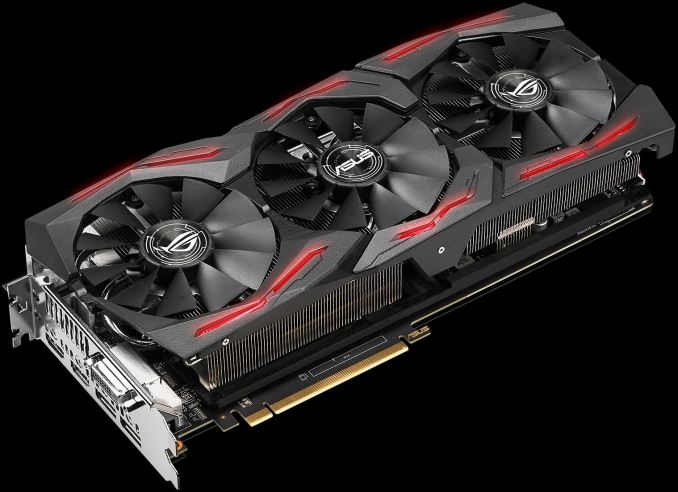
The ASUS ROG STRIX RX Vega 64 OC Edition, one of the first custom cards announced
As for the existing RX Vega 64 and 56 cards, only reference cards are
available on shelves right now. AIB partners have announced or teased a
few upcoming custom RX Vega cards, and theoretically they should be
arriving soon. When they do, they will offer consumers more options,
which is always welcome. Ideally, this would coincide with a
stabilization of prices and availability. In particular, custom RX Vega
56 cards in the $400s against GTX 1070s and the new GTX 1070 Ti's would
be a good development for cost-conscious consumers in the market for
high-end cards.Source : anandtech.com
Late 2017 Video Card MSRP Table
As a reminder, all the previously mentioned video cards in this guide have the following MSRPs:| Late 2017 MSRP/SEP Comparison | |||||
| AMD | Price | NVIDIA | |||
| Radeon RX Vega 64 LC (Radeon Pack pricing) |
$699 | GeForce GTX 1080 Ti | |||
| Radeon RX Vega 64 | $499 | GeForce GTX 1080 | |||
| $449 | GeForce GTX 1070 Ti | ||||
| Radeon RX Vega 56 | $399 | ||||
| $379 | GeForce GTX 1070 | ||||
| $249 | GeForce GTX 1060 6GB (1280 cores) |
||||
| Radeon RX 580 8GB | $229 | ||||
| Radeon RX 580 4GB | $199 | GeForce GTX 1060 3GB (1152 cores) |
|||
| Radeon RX 570 | $169 | ||||
| $139 | GeForce GTX 1050 Ti 4GB | ||||
| $109 | GeForce GTX 1050 2GB | ||||
| Radeon RX 560 | $99 | ||||
- Get link
- X
- Other Apps
